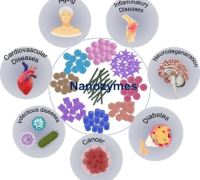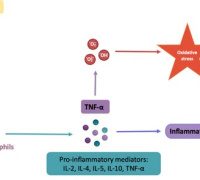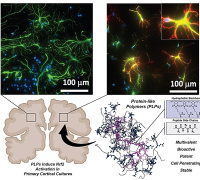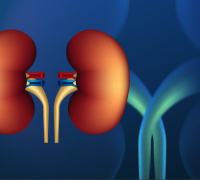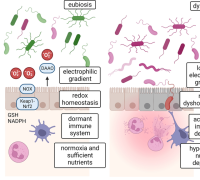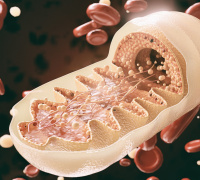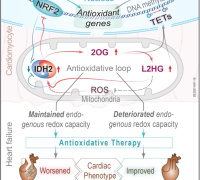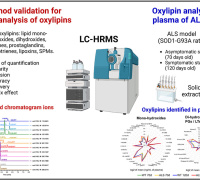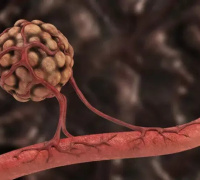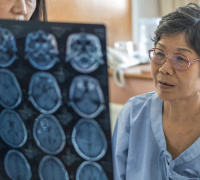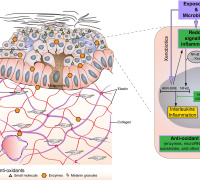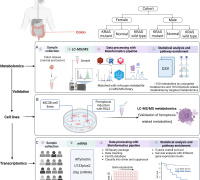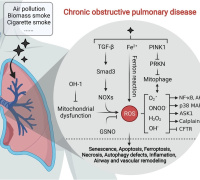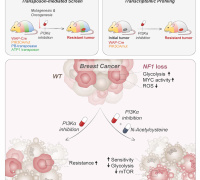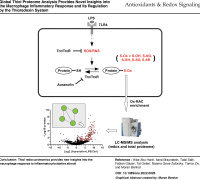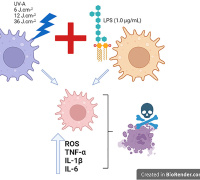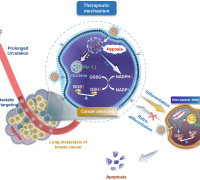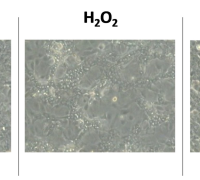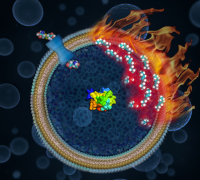News
Artificial Intelligence & Algorithms: Applications in Redox Medicine & Radiology
 The Redox Medicine Society is pleased to welcome Dr. Maxime Barat, Université Paris Cité, Hôpital Cochin, France to the 26th International Conference "Redox Medicine 2024" this June in Paris.
The Redox Medicine Society is pleased to welcome Dr. Maxime Barat, Université Paris Cité, Hôpital Cochin, France to the 26th International Conference "Redox Medicine 2024" this June in Paris.
Title: Artificial Intelligence & Algorithms: Applications in Redox Medicine & Radiology
Redox Medicine 2024 Speaker Line-up.
Redox Medicine Society
Redox Medicine 2024 Conference
June 27-28 - Paris, France
Press Releases | Newsletters Archive | LinkedIn
Nanozymes: Revolutionizing Biomedical Therapies through Redox Regulation

In a recent paper, Mugesh et al. have made significant strides in the realm of nanozymes, nanomaterials exhibiting enzyme-like functions. Nanozymes have garnered considerable attention due to their potential to replace natural enzymes across a spectrum of biomedical applications, including biosensing, therapeutics, drug delivery, and bioimaging.
Of particular interest are nanozymes capable of modulating cellular redox status by emulating antioxidant enzymes in mammalian cells. This capability holds promise for addressing oxidative-stress-related disorders. Distinguishing between physiological oxidative stress (oxidative eustress) and pathological oxidative stress (oxidative distress) poses a notable challenge. Designing nanozymes capable of discerning and reacting appropriately to these varying cellular conditions in cells, tissues, and organs is crucial.
In their review, Mugesh et al. outlined advancements in the development of redox-active nanozymes and their biomedical applications. They underscored the therapeutic significance of both antioxidant and prooxidant nanozymes in various disease models, including cancer, neurodegeneration, and cardiovascular diseases.
Looking ahead, they discussed future prospects in this burgeoning field and outline the challenges associated with the biomedical applications of nanozymes. Their work sheds light on the potential of nanozymes to revolutionize therapeutic interventions in oxidative-stress-mediated disorders, offering hope for improved treatment modalities in the future.
Photo Description:
This Review offers an overview of the recent development of redox-active nanozymes, primarily highlighting antioxidant and prooxidant nanozymes and their therapeutic significance in oxidative-stress-mediated disorders with an outlook on the current challenges and future trends. The insight provided should aid the development of next-generation therapeutic nanozymes for translation into clinical settings.
Photo Credits: Graphical Abstract N. Singh, G. R. Sherin, G. Mugesh, Angew. Chem. Int. Ed. 2023
Innovative Approach to Combat Neurodegenerative Diseases Using Protein-Like Polymers to Enhance Antioxidant Response
Researchers led by Northwestern University and the University of Wisconsin-Madison have introduced a pioneering approach aimed at combating neurodegenerative diseases such as Alzheimer's disease, Parkinson's disease and Amyotrophic lateral sclerosis (ALS).
In a new study, researchers discovered a new way to enhance the body's antioxidant response, which is crucial for cellular protection against the oxidative stress implicated in many neurodegenerative diseases.
The study published today (February 16) in the journal Advanced Materials.
Nathan Gianneschi, the Jacob & Rosaline Cohn Professor of Chemistry at Northwestern's Weinberg College of Arts and Sciences and member of the International Institute for Nanotechnology, led the work with Jeffrey A. Johnson and Delinda A. Johnson of the University of Wisconsin-Madison School of Pharmacy.

Proteins are nature's polymers, governing biological processes at every level. A new study presents artificial proteins made using modern, precision polymers to intervene and alter natural processes towards a new way of developing therapeutics. Credit: Northwestern University/University of Wisconsin
Targeting neurodegenerative diseases
Alzheimer's disease, characterized by the accumulation of beta-amyloid plaques and tau protein tangles; Parkinson's disease, known for its loss of dopaminergic neurons and presence of Lewy bodies; and ALS, involving the degeneration of motor neurons, all share a common thread of oxidative stress contributing to disease pathology.
The study focuses on disrupting the Keap1/Nrf2 protein-protein interaction (PPI), which plays a role in the body's antioxidant response. By preventing the degradation of Nrf2 through selective inhibition of its interaction with Keap1, the research holds promise for mitigating the cellular damage that underlies these debilitating conditions.
"We established Nrf2 as a principal target for the treatment of neurodegenerative diseases over the past two decades, but this novel approach for activating the pathway holds great promise to develop disease-modifying therapies," Jeffrey Johnson said.
Limitations of current therapeutics
The research team embarked on addressing one of the most challenging aspects of neurodegenerative disease treatment: the precise targeting of PPIs within the cell. Traditional methods, including small molecule inhibitors and peptide-based therapies, have fallen short due to lack of specificity, stability and cellular uptake.
The study introduces an innovative solution: protein-like polymers, or PLPs, are high-density brush macromolecular architectures synthesized via the ring-opening metathesis polymerization (ROMP) of norbornenyl-peptide-based monomers. These globular, proteomimetic structures display bioactive peptide side chains that can penetrate cell membranes, exhibit remarkable stability and resist proteolysis.
This targeted approach to inhibit the Keap1/Nrf2 PPI represents a significant leap forward. By preventing Keap1 from marking Nrf2 for degradation, Nrf2 accumulates in the nucleus, activating the Antioxidant Response Element (ARE) and driving the expression of detoxifying and antioxidant genes. This mechanism effectively enhances the cellular antioxidant response, providing a potent therapeutic strategy against the oxidative stress implicated in many neurodegenerative diseases.
The innovation behind protein-like polymers
PLPs, developed by Gianneschi's team, could represent a significant breakthrough in halting or reversing damage offering hope for improved treatments and outcomes.
Focusing on the challenge of activating processes crucial for the body's antioxidant response, the team's research offers a novel solution. The team provides a robust, selective method enabling enhanced cellular protection and offering a promising therapeutic strategy for a range of diseases including neurodegenerative conditions.
"Through modern polymer chemistry, we can begin to think about mimicking complex proteins," Gianneschi said. "The promise lies in the development of a new modality for the design of therapeutics. This could be a way to address diseases like Alzheimer's and Parkinson's among others where traditional approaches have struggled."
This approach not only represents a significant advance in targeting transcription factors and disordered proteins, but also showcases the PLP technology's versatility and potential to revolutionize the development of therapeutics. The technology's modularity and efficacy in inhibiting the Keap1/Nrf2 interaction underscore its potential for impact as a therapeutic, but also as a tool for studying the biochemistry of these processes.
A collaboration of minds
Highlighting the study's collaborative nature, Gianneschi's team worked closely with experts across disciplines, illustrating the rich potential of combining materials science with cellular biology to tackle complex medical challenges.
"We were contacted by Professor Gianneschi and colleagues proposing to use this novel PLP technology in neurodegenerative diseases due to our previous work on Nrf2 in models of Alzheimer's disease, Parkinson's disease, ALS and Huntington's disease," Jeffrey Johnson said. "We had never heard of this approach for Nrf2 activation and immediately agreed to initiate this collaborative effort that led to the generation of great data and this publication."
This partnership underscores the importance of interdisciplinary research in developing new therapeutic modalities.
Impact
With the development of this innovative technology, Gianneschi and his colleagues at the International Institute for Nanotechnology and the Johnson Lab at the University of Wisconsin-Madison, are not just advancing the field of medicinal chemistry, they are opening new pathways to combat some of the most challenging and devastating neurodegenerative diseases faced by society today. As this research progresses towards clinical application, it may soon offer new hope to those suffering from diseases of oxidative stress such as Alzheimer's and Parkinson's diseases.
"By controlling materials at the scale of single nanometers, we're opening new possibilities in the fight against diseases that are more prevalent than ever, yet remain untreatable," Gianneschi said. "This study is just the beginning. We're excited about the possibilities as we continue to explore and expand the development of macromolecular drugs, capable of mimicking some of the aspects of proteins using our PLP platform."
Join Redox Medicine 2024 this June in Paris, where we will cover all new insights into redox medicine and neurodegenerative diseases.
News Source: Northwestern University.
Oxidative Stress: A Key Player in Recurrent Aphthous Stomatitis
A new systematic review by Cristina Estornut and colleagues, published in the Journal of Molecular Medicine in February 2024, focuses on the role of oxidative stress in recurrent aphthous stomatitis (RAS), a chronic and recurrent inflammatory condition of the mouth characterized by painful ulcers on the oral mucosa. Oxidative stress, resulting from an imbalance between free radicals and the antioxidant defense system, is implicated in the pathogenesis of RAS, alongside genetic predisposition, environmental factors, and immune system alterations. Various risk factors, including smoking, iron and vitamin deficiencies, and anxiety, may contribute to the disease's development.

Explanatory diagram of the process of appearance of oral cell damage through inflammatory induction and ROS production. Created with Biorender. Credits: Cristina Estornut et al., 2024.
To understand the systemic and local effects of oxidative stress on RAS, the researchers conducted a comprehensive literature search across PubMed, Scopus, and Web of Science, spanning from 2000 to 2023. They selected studies that analyzed oxidant and antioxidant levels in both blood and saliva samples of RAS patients compared to healthy controls. Out of 170 potentially relevant articles, 24 met the inclusion criteria, encompassing studies on blood (11 studies), saliva (6 studies), and both (7 studies).
The findings revealed statistically significant differences between RAS patients and healthy controls in multiple oxidative and antioxidant markers in both saliva and blood samples. Notably, there was an increased oxidative DNA damage in RAS patients, indicating elevated levels of oxidative stress compared to healthy individuals. These results suggest a significant increase in oxidative markers and a decrease in antioxidant defenses in individuals with RAS.
The study underscores the importance of understanding oxidative stress's role in RAS to develop prevention and treatment strategies. By highlighting the imbalance between oxidative and antioxidant markers in RAS patients, it points towards potential therapeutic interventions focusing on antioxidant supplementation or lifestyle modifications aimed at reducing oxidative stress, thus mitigating the disease's impact.
Redox Medicine 2024 will cover all strategies to control oxidative stress, as well as the role of antioxidants. Join the conference in June and submit a related abstract.
Study Reveals Impact of Donor Age Differences on Renal Transplantation Outcomes

Renal transplantation stands as a vital therapeutic avenue for individuals grappling with severe chronic kidney diseases. However, a prevailing challenge emerges for younger patients in the form of a scarcity of kidneys procured from donors of comparable age. This often culminates in the transplantation of older organs, elevating the risk of graft rejection and subsequent complications, as compared to older recipients who receive organs from donors of similar age or younger.
A recent paper published in Antioxidants & Redox Signaling Journal delves into this critical issue. The study meticulously examines various senescence biomarkers in both donors and recipients of renal transplants across different age brackets, adhering to the stringent STROBE requirements.
The research, encompassing 61 patients undergoing renal transplant procedures, involved the isolation of blood samples at distinct intervals: 24 hours before the transplant, and at 24 hours, 3 days, 7 days, 3 months, and 6 months post-transplantation. Patients were categorized into three cohorts based on the age relationship between donor and recipient: "Old Donor," "Young Donor," and "Matched."
Key findings underscored a notable increase in mRNA and protein expression of senescence markers, including p16, p21, IL-6, and SASP release, among young patients receiving kidneys from older donors. Conversely, older patients who received kidneys from younger donors exhibited a gradual yet consistent amelioration in their initial senescent profile.
Furthermore, employing a macrophage cell model treated with serum derived from patients six months post-transplant revealed a pro-senescence milieu, presumably orchestrated by the SASP emanating from the patients.
These compelling insights have sparked a hypothesis proposing the potential efficacy of senolytics in curbing the prevalence of senescent cells and alleviating complications associated with the transplantation of older organs in younger recipients.
The study not only sheds light on the intricate interplay between donor age and transplant outcomes but also paves the way for innovative therapeutic strategies aimed at enhancing the efficacy and longevity of renal transplants, particularly for younger recipients.
Join Redox Medicine 2024 this June in Paris, where Dr. Mario Cordero, lead author of the paper, will further elaborate on the relationship between biomarkers and donor age in chronic kidney disease.
Copyrights: Redox Medicine Society.
Image Credits: WangXiNa - Freepik.




























